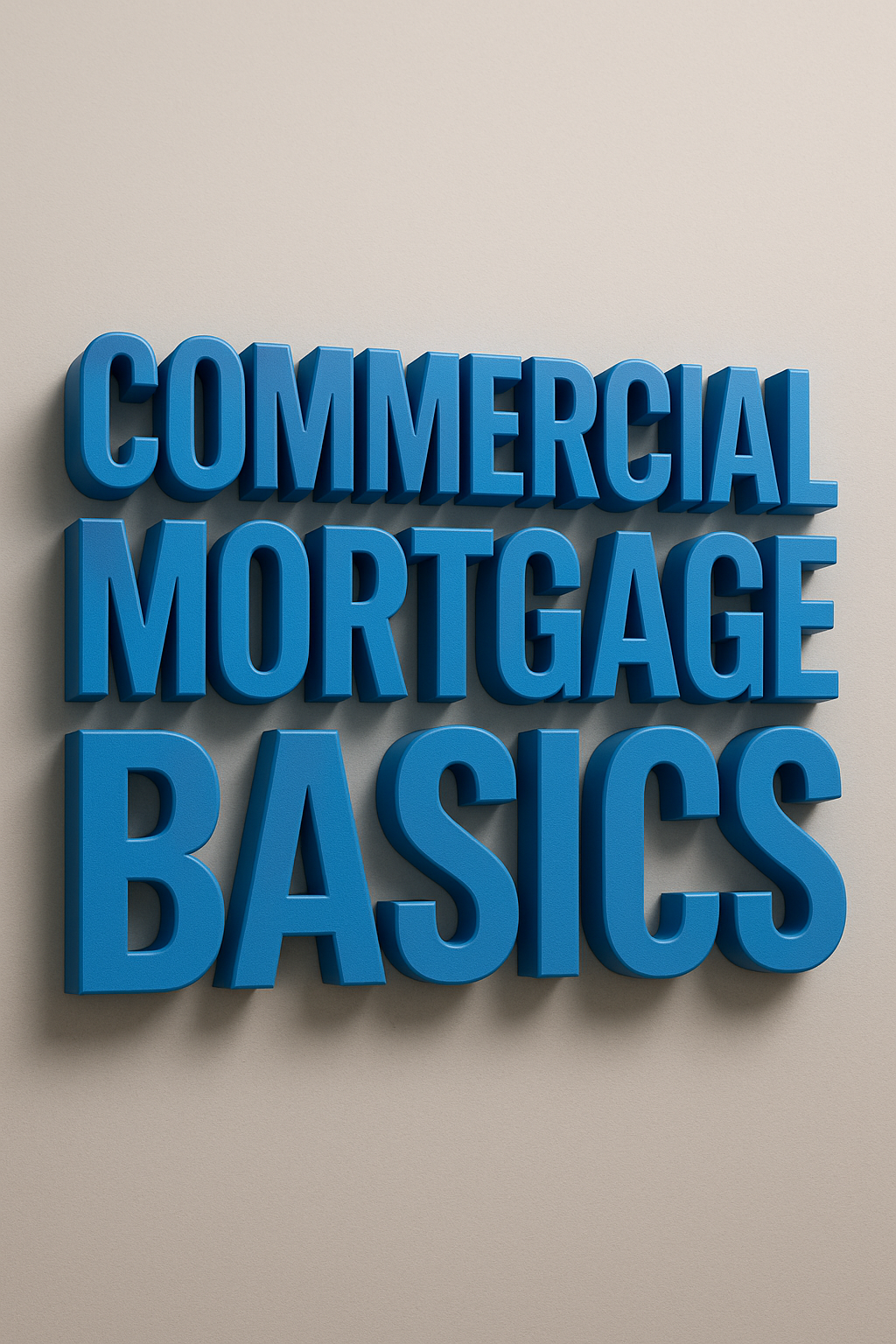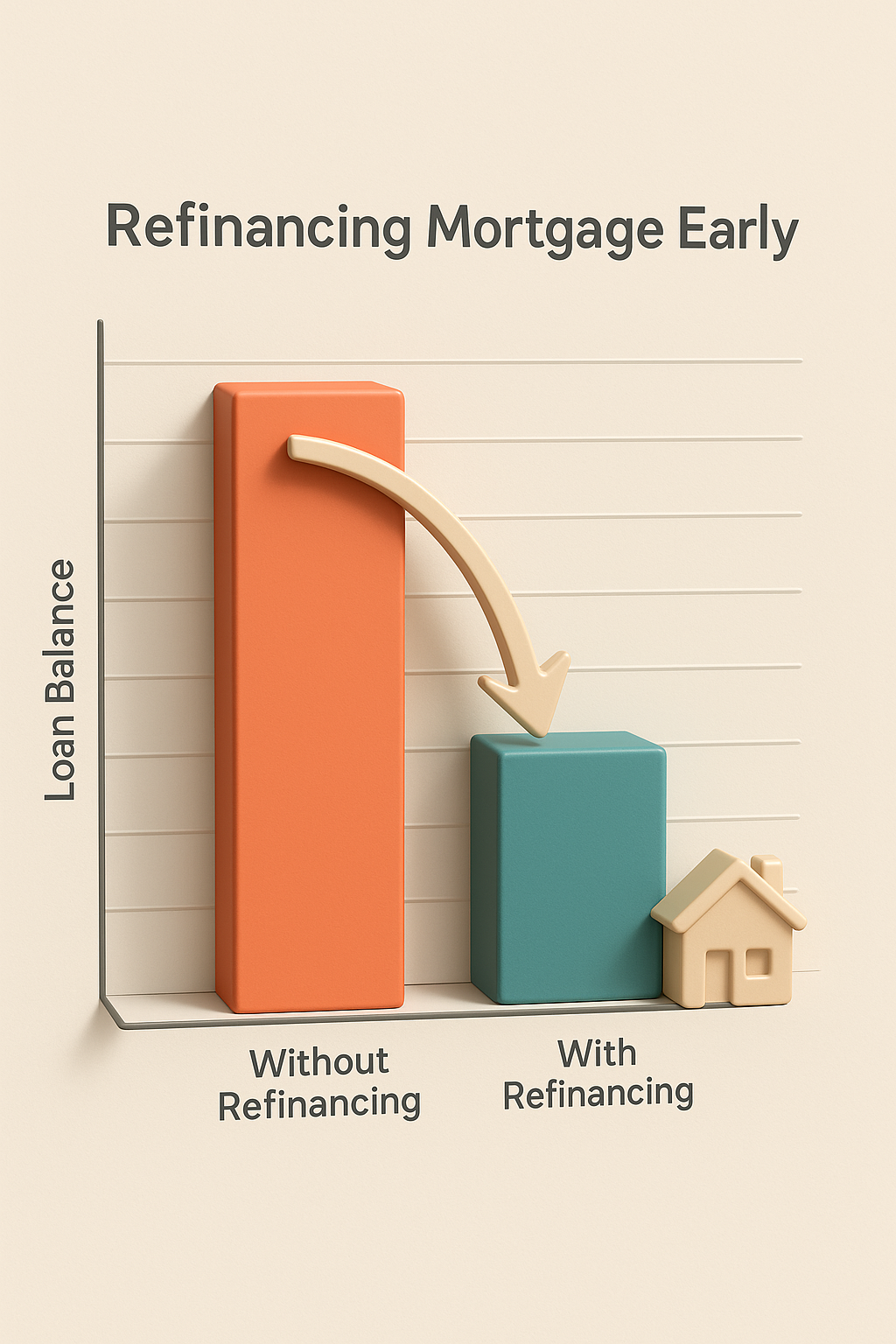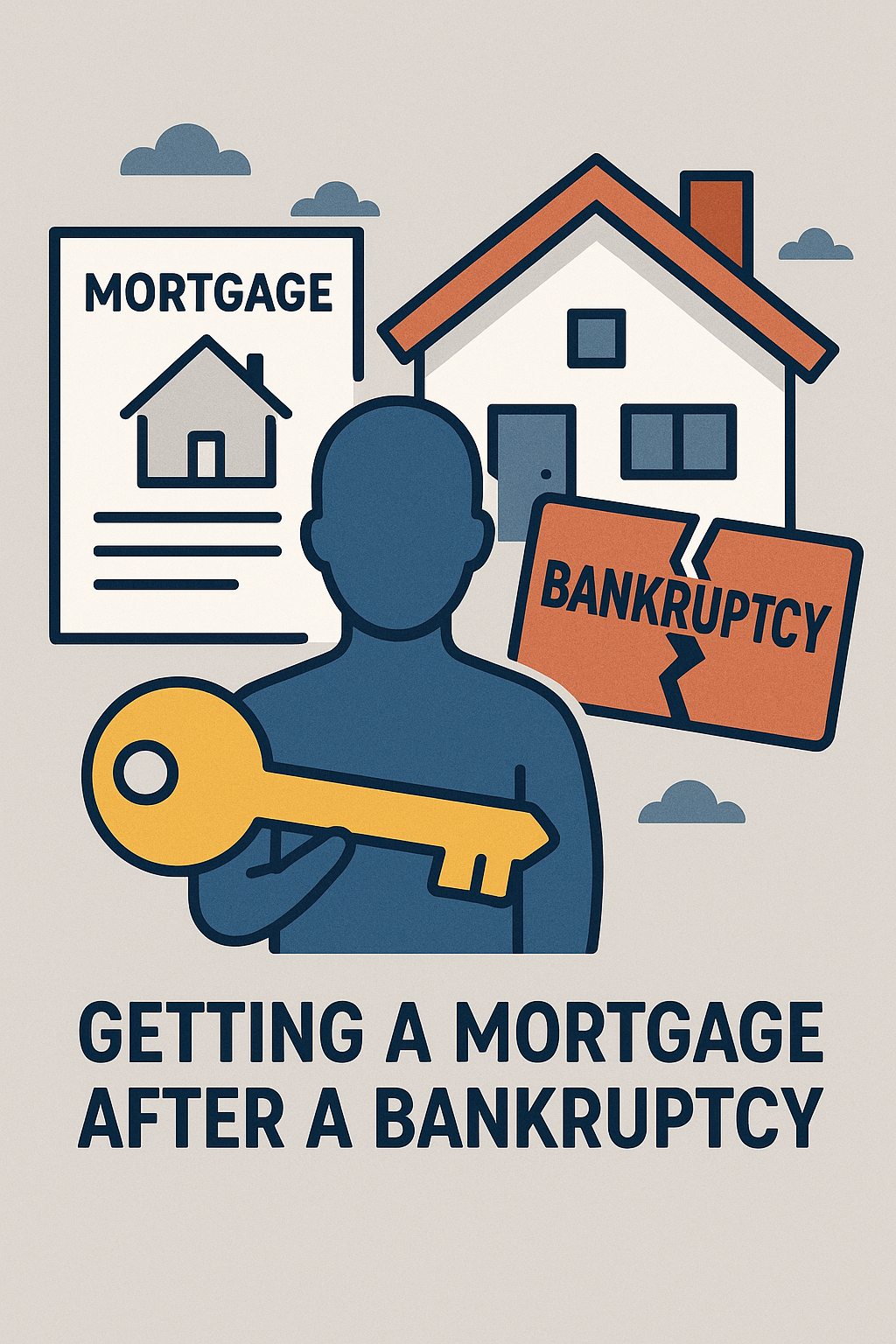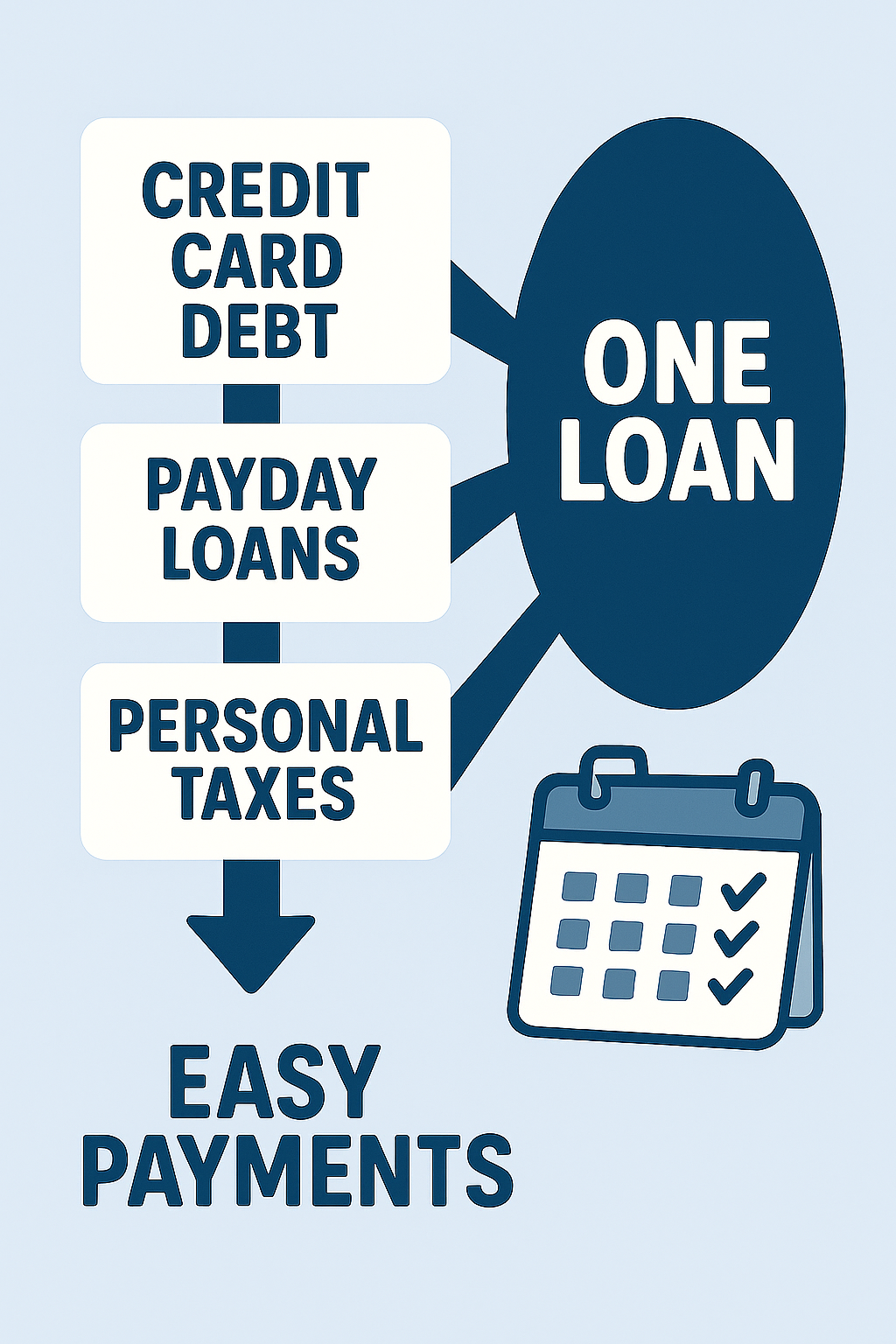Table of Contents
ToggleOntario Commercial Mortgage Basics: How Financing Works
If you’re planning to buy, refinance, or build an income-producing property in Ontario, understanding how Ontario commercial mortgages are underwritten will save you time, money, and stress. Unlike residential lending, commercial financing is driven primarily by asset cash flow, covenant strength, and risk management. This guide breaks down the essentials—DSCR, LTV, debt yield, rates, reports, timelines, and costs—so you can approach lenders with a bank-ready file.
What counts as a “commercial mortgage” in Ontario?
A commercial mortgage finances income-producing real estate or property used for business purposes. Typical asset classes include industrial (warehouses, flex), multi-residential (5+ units), retail plazas, office buildings, self-storage, mixed-use (res over retail), hospitality, and special-use properties. Owner-occupied buildings (e.g., a manufacturer buying its own plant) are also financed in the commercial channel, but underwriting blends business financials with real estate fundamentals.
How lenders size your loan: DSCR, LTV, and debt yield
1) Net Operating Income (NOI)
Everything starts with NOI—gross potential rent minus vacancy and operating expenses (property taxes, insurance, utilities where applicable, repairs & maintenance, management, and a reserve for replacements). Lenders may “normalize” expenses to industry benchmarks and will scrutinize lease quality (term remaining, covenant strength, renewals, break clauses, and co-tenancy risks).
2) Debt Service Coverage Ratio (DSCR)
DSCR = NOI / Annual Debt Service.
Most Ontario lenders target 1.20x–1.30x+ on stabilized NOI. Stronger sponsors or durable assets can sometimes secure flexibility; riskier files may need a higher DSCR. If your DSCR is thin at your requested loan amount, the lender will either reduce proceeds (lower loan) or price higher to compensate for risk.
3) Loan-to-Value (LTV)
LTV compares the loan to the appraised market value. Typical commercial LTVs in Ontario range from 60%–75%, depending on asset class, location, tenant quality, and stability. Multi-residential with mortgage insurance can go higher; special-use properties and assets with near-term lease rollover may be capped lower.
4) Debt Yield
Debt yield = NOI / Loan Amount.
It tells lenders how fast they theoretically get their money back if they had to take over the property. Many lenders look for ~8%–10%+; conservative credit boxes may aim higher on transitional or tertiary-market assets.
Tip: Underwrite your deal using all three lenses—DSCR, LTV, and debt yield—before you approach lenders. The tightest constraint usually dictates your maximum proceeds.
What drives your commercial mortgage rate in Ontario?
Commercial mortgage pricing is built from:
-
Benchmark rates: Typically, Government of Canada bond yields for fixed terms or prime/CDOR equivalents for variable.
-
Credit spread: Reflects asset risk, sponsor strength, covenant quality, and market liquidity.
-
Loan characteristics: LTV, DSCR, amortization, term length, prepayment flexibility, guarantees, property condition, and environmental profile.
Other variables that widen or tighten spreads:
-
Lease rollover: Near-term expiries increase risk if replacement tenants or market rents are uncertain.
-
Tenant concentration: Single-tenant buildings carry higher binary risk versus multi-tenant plazas—unless the tenant is investment-grade.
-
Location: Primary markets (Toronto/GTA, Ottawa, Kitchener-Waterloo, Hamilton) generally command better pricing than thin-liquidity submarkets.
-
Use and condition: Older buildings with deferred capital expenditures, unpermitted uses, or specialized configurations tend to price wider.
Amortization, term, and prepayment
-
Amortization: Commonly 20–30 years for stabilized assets. Construction and bridge loans are typically interest-only during the term.
-
Term: Anywhere from 1–10 years. Short terms are popular for transitional business plans (lease-up, capex), while core assets often lock in for 5–10 years.
-
Prepayment: Expect yield maintenance, defeasance, or declining IRD/step-down penalties on fixed-rate loans. Bridge loans may allow more flexible exits. Clarify open periods, breakage costs, and assumption rights in your commitment.
Recourse, guarantees, and covenants
Commercial lenders in Ontario may request full recourse, limited recourse, or non-recourse with standard “bad-boy” carve-outs (fraud, waste, environmental). Mid-market deals commonly include some form of sponsor guarantee, especially for leverage above 65–70% LTV or where the story requires execution (lease-up, capex). Expect covenants around:
-
Reporting (rent rolls, operating statements, updated estoppels)
-
Cash management (lockboxes, reserves for TILCs, capex, or taxes)
-
Performance (DSCR maintenance tests on some loans)
CMHC-insured financing for multi-residential (including MLI Select)
For multi-residential (5+ units), CMHC-insured financing—especially under MLI Select—can offer lower rates, higher LTVs, and longer amortizations when you meet program criteria (e.g., energy efficiency, affordability, accessibility). Insured loans are popular for acquisition, refi, and take-out of construction debt. Expect heavier documentation, third-party studies, and precise project scopes if you’re seeking Select points.
Owner-occupied vs. investment property underwriting
-
Owner-occupied realty: Lenders underwrite the business (financial statements, cash flow stability, debt service) and the real estate. Offers may blend realty and equipment financing or include operating lines.
-
Investment property: Underwritten primarily on NOI durability—lease terms, tenant covenants, rollover schedule, and market depth.
In both cases, sponsor net worth, liquidity, and track record matter, particularly in construction and higher-leverage scenarios.
Third-party reports you’ll likely need
-
AACI Appraisal: Confirms As-Is, As-If Complete, and/or Stabilized value depending on your plan. Supports LTV and loan sizing.
-
Environmental (ESA) Phase I and, if triggered, Phase II: Critical for properties with historical or adjacent uses involving potential contaminants (auto, dry cleaning, industrial, fueling).
-
Building Condition/Structural Report (BCA/PR): Outlines capital needs and deferred maintenance; lenders may require capex reserves.
-
Quantity survey/cost consultant (for construction): Confirms hard/soft costs, contingency and progress draws align with budgets.
-
Legal due diligence: Title search, estoppel certificates, SNDA agreements, survey or title insurance, and corporate docs.
The commercial mortgage process & realistic timeline
-
Pre-screen & term sheet (1–2 weeks):
You’ll provide a rent roll, historical T12/T24 operating statements, pro forma, borrower financials, and a deal narrative. Strong files include a lease abstract with critical dates and options. -
Conditional approval & reports (2–6+ weeks):
Order the appraisal, environmental, and BCA. The lender’s credit team reviews results, refines sizing, and sets conditions. For construction, you’ll finalize budgets, permits, and QS review. -
Legal & closing (2–4 weeks):
Your counsel and lender’s counsel clear title, finalize loan docs, register security, and set up reserves/holdbacks. You’ll coordinate insurance certificates, estoppels, and any SNDA requirements.
Clean, mid-market refinances can be completed in 30–60 days. Construction, portfolio, or story deals can take longer. Bridge lenders can move faster but typically price higher.
Typical closing costs to budget
-
Appraisal, environmental, BCA/QS
-
Lender fee /commitment fee
-
Legal fees (your counsel + lender’s counsel)
-
Title insurance/survey
-
Broker fees (if applicable)
-
Reserves/holdbacks (TILCs, capex, interest, taxes)
-
Land Transfer Tax on purchases (and Toronto MLTT inside the City of Toronto)
Including these in the pro forma prevents last-minute surprises and supports smoother underwriting.
Common pitfalls (and how to avoid them)
-
Overstated NOI: Lenders will normalize expenses; leave room for management, R&M, and a replacement reserve.
-
Lease rollover blind spots: A High percentage of GLA expiring inside the loan term without a plan for renewals or leasing risk will cut proceeds.
-
Incomplete environmental history: Old site uses and adjacent risks matter. Be proactive about ESA Phase I scope and records.
-
Deferred capex: Roofs, HVAC, and parking lots can trigger reserve requirements. Bring quotes and timelines.
-
Thin liquidity: Even strong net worth won’t replace post-close liquidity. Lenders want to see cash available to weather shocks.
-
Mismatched term to business plan: If you intend to renovate and refi in 24 months, avoid heavy prepayment penalties on a long fixed term.
How to position your file for the best terms
-
Tell a crisp story: Why this asset? What’s the business plan—hold, refi, or value-add?
-
Provide clean packages: Current rent roll, T12/T24, three years of operating history if available, and a lease abstract.
-
Prove demand: Market comps, showing activity, or letters of intent for upcoming vacancies.
-
De-risk the plan: Quotes for capex, contractor shortlists, and realistic timelines.
-
Know your constraints: Size your ask using DSCR, LTV, and debt yield. Approach the market with a plausible request.
-
Consider alternatives: Bridge, mezzanine, second mortgage, or vendor take-back (VTB) can complete the capital stack and protect IRR when senior proceeds are capped.
FAQ: Quick answers to common Ontario commercial mortgage questions
What LTV can I expect?
Most stabilized assets finance around 60%–75% LTV. Insurance on multi-residential can push higher; special-use or tertiary markets may be lower.
What DSCR do lenders want?
Commonly 1.20x–1.30x+ on stabilized NOI; transitional files and single-tenant assets may require stronger coverage.
How long does it take to close?
Plan for 30–60 days on straightforward refinances; construction and complex transactions can extend to 90+ days.
Fixed or variable?
Match the term to your plan. If you’ll refinance or sell soon, avoid punitive prepayment. If you’re a long-term hold, a fixed rate can de-risk interest exposure.
Do I need a personal guarantee?
Often yes in the mid-market, though limited recourse or non-recourse may be negotiable with strong fundamentals and lower leverage.
What about CMHC for apartments?
CMHC-insured multi-residential financing—including MLI Select—can lower rates and extend amortization if you meet program criteria.
The bottom line
Commercial financing in Ontario rewards clarity, documentation, and risk management. Underwrite your deal the way lenders do: validate NOI, stress-test DSCR and debt yield, and anticipate concerns around leases, environmental, and capex. Choose a loan structure that aligns with your business plan, and be ready to support it with third-party reports and clean legal.
If you’d like help with your financing needs, visit Lendtoday.ca
- Mortgage Co-Signer vs Guarantor in Canada: Expert Playbook to a Smarter Approval in 2025 - September 24, 2025
- 7 Powerful Steps to Rent-to-Own Success: How to Qualify for a Mortgage and Exercise Your Option to Purchase - September 22, 2025
- Refinance Your Home Should be 1st Choice to Consolidate Debt: A Smarter Path Than Consumer Proposals or Bankruptcy - September 20, 2025






